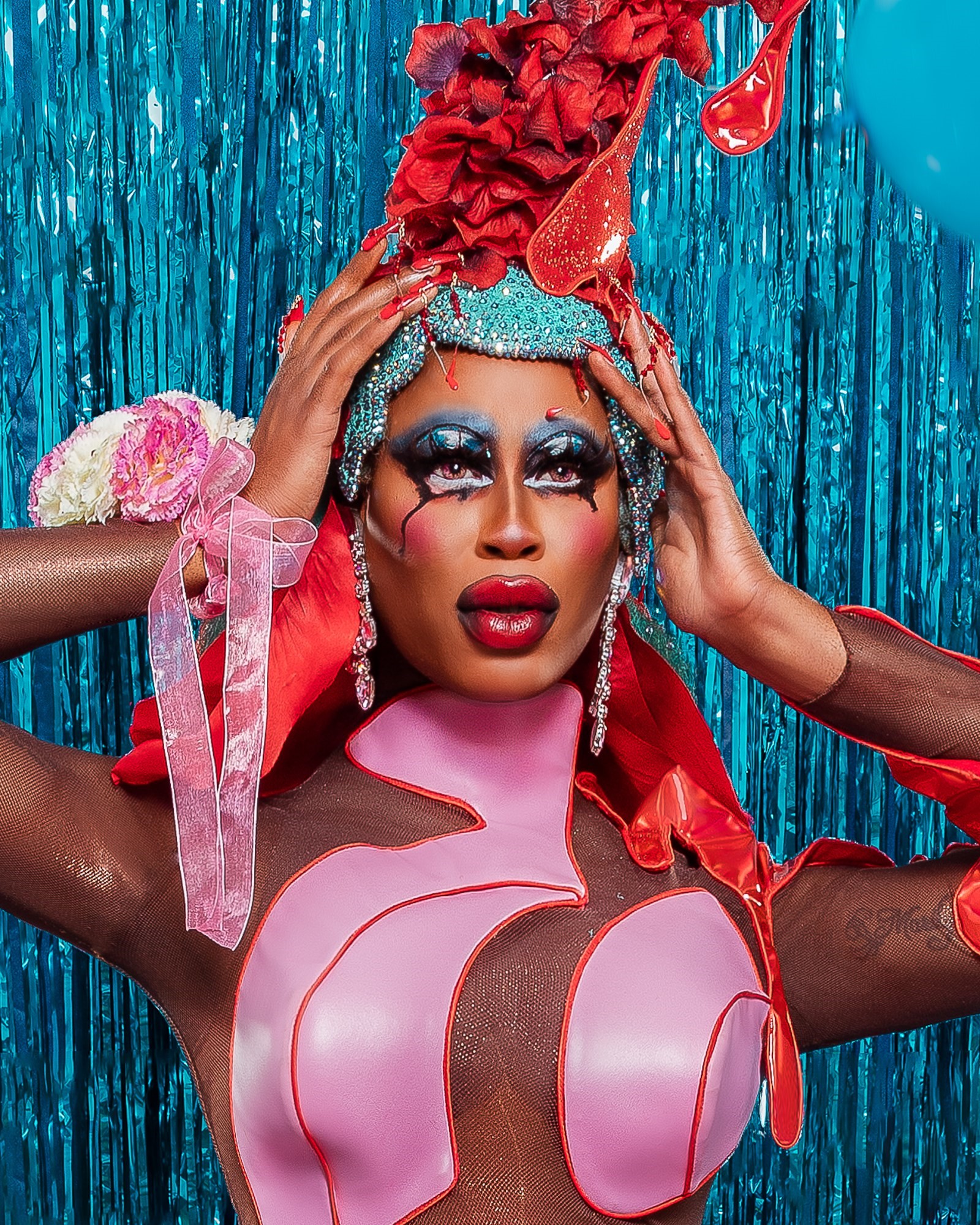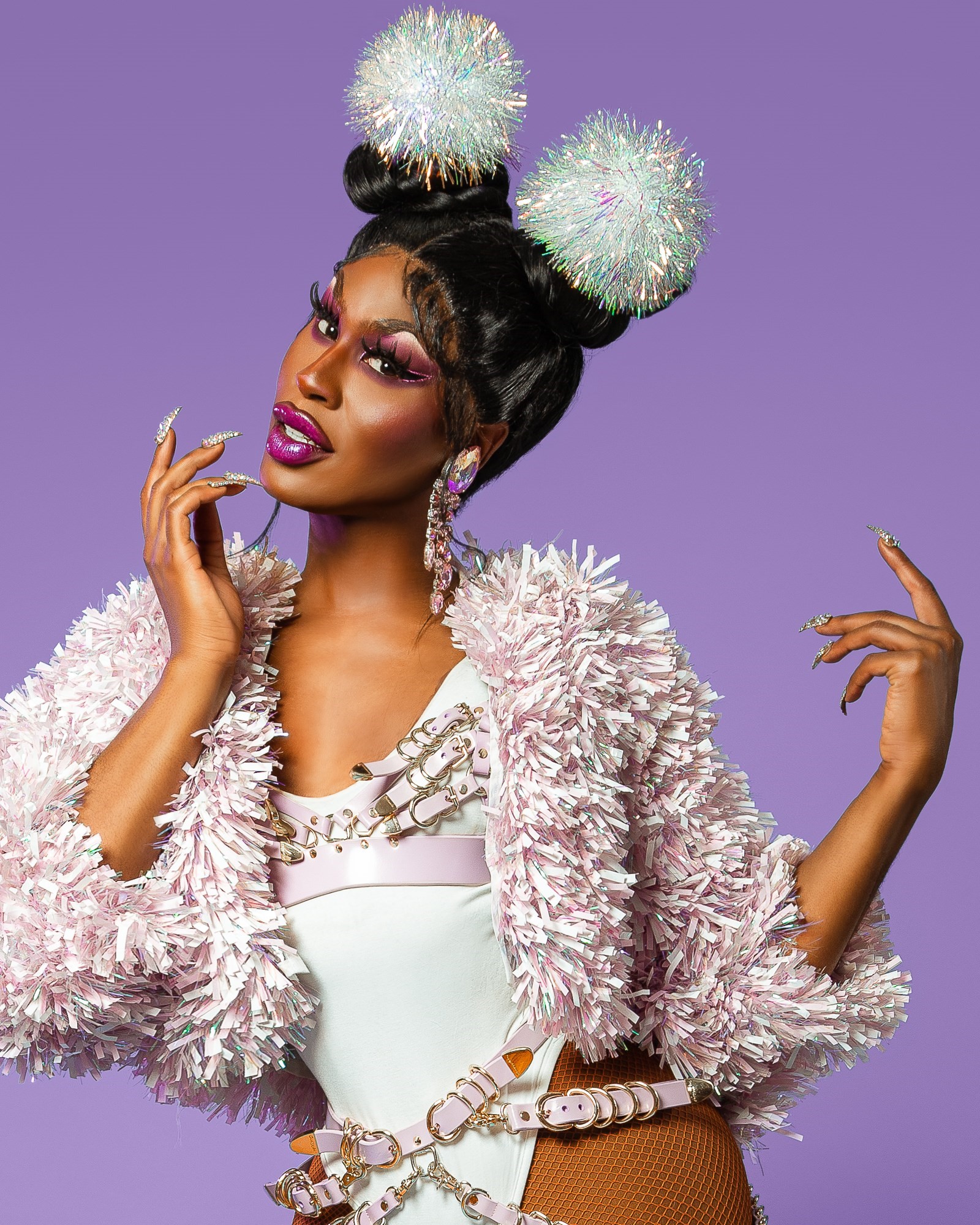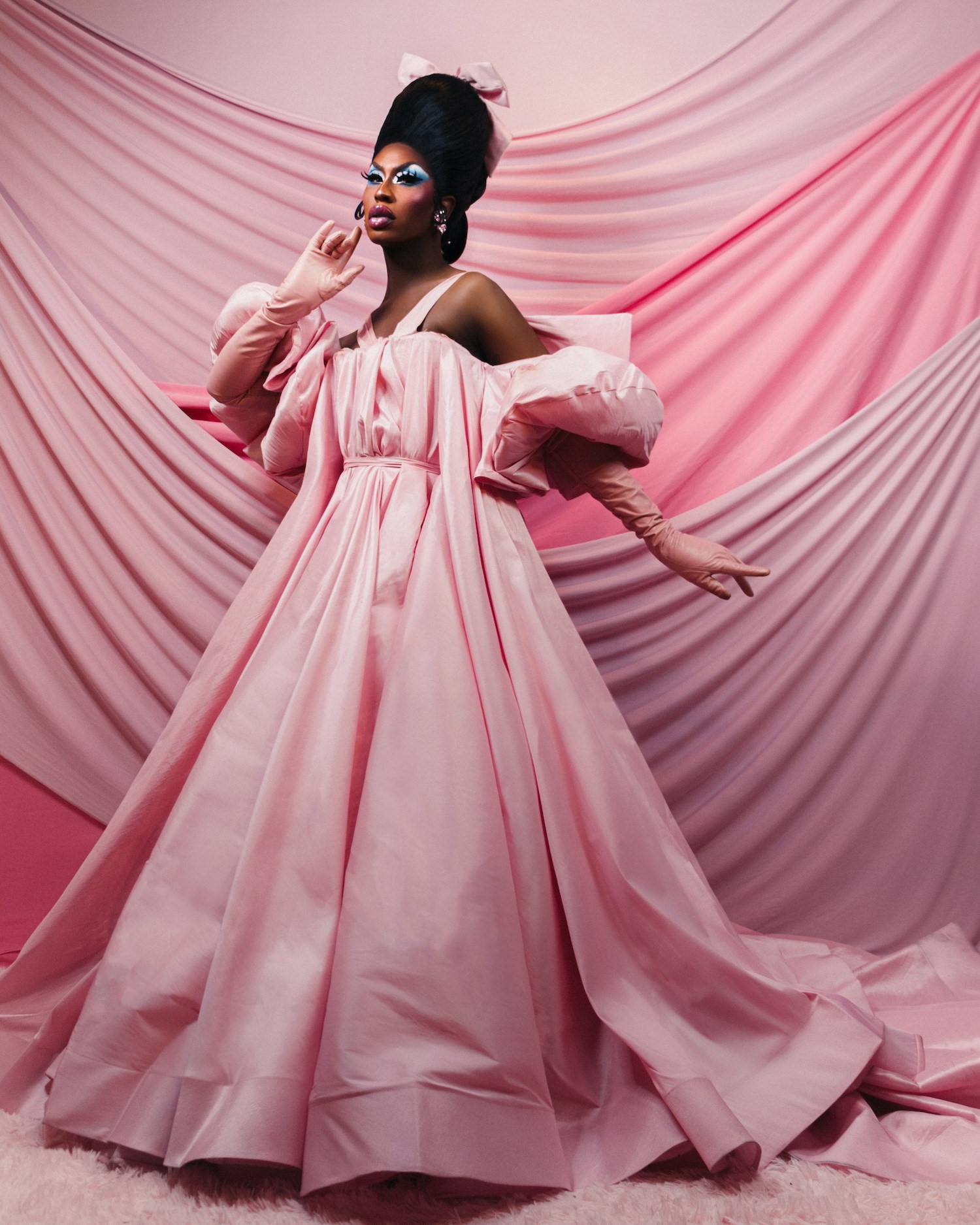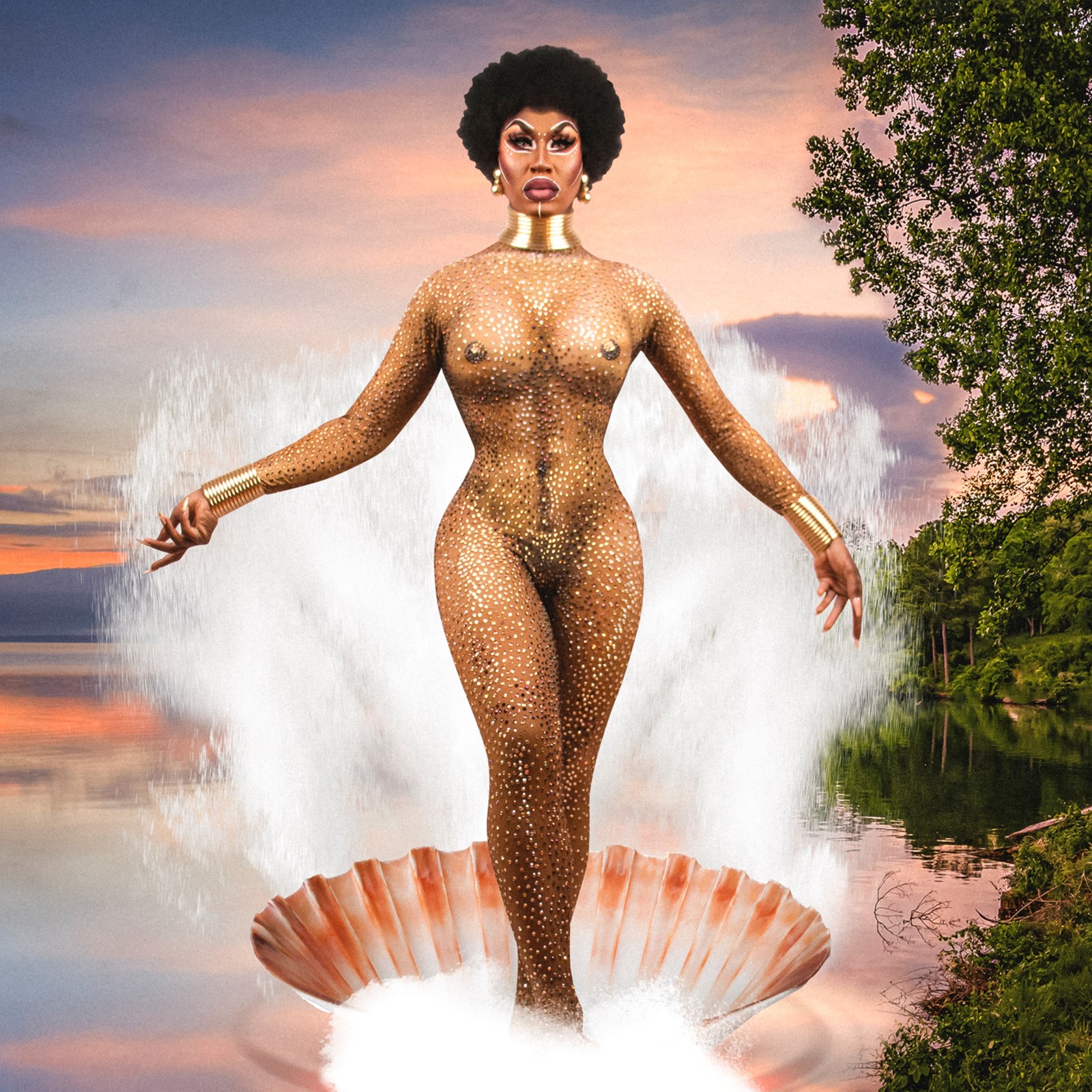While I’m on the phone with Shea Couleé, she has to pause mid-sentence to receive a flower delivery. “They have literally been coming every single day,” she says. “Nonstop! It’s the botanical gardens in here.”
The 31-year-old drag icon and I speak five days after her win on RuPaul’s Drag Race: All Stars, the spin-off that offers prior Drag Race contestants a second shot at the crown, the glory, and $100,000 cash. All season, it felt clear that the lot would go to Shea, the way these things feel only sometimes. Practically predetermined.
“I feel more confident and sure of myself than I ever have before,” Shea says. She’s a person who talks about self-actualisation and manifestation – and is palpably spiritual in the way she speaks about drag – so it’s unsurprising that she also nods toward universal alignment. Now, she says, “was when it was supposed to happen”.

To credit providence alone, though, would overlook a long artistic odyssey. It began at least nine years ago, when Shea first stepped onto a stage in drag. The song was Beyoncé’s Suga Mama; the final reveal left Shea in not much more than pasties, a garter, and pumps; the crowd, mostly middle-aged, initially reticent Black women, lost its mind.
It arguably began years before even that – in a house in Plainfield, Illinois, where Shea, the youngest of five half-siblings, grew up in a tight-knit, religious family (Shea’s mother is a reverend). That’s where Shea first watched Little Shop of Horrors and Grease, where an older sister introduced Shea to drag via RuPaul, and where Shea first wanted to be a star. “I didn’t quite understand in what capacity,” she recalls. “I just knew that I loved the power of being able to command people’s attention.”
The adolescent years were steeped in musical theatre; Shea later studied costume design at Columbia College Chicago. She did that first drag number after graduation, and the experience clarified something for her: with drag, she could work backstage and onstage, use her design training, and serve as her own muse. She could receive, via femininity, that crowd’s affirmation. “It was so impactful,” she recalls. “I could hear [the applause] vibrating through the soles of my feet ... I was just like, this is it.”

The drag, from the beginning, revelled in that Suga Mama POV: Beyoncé in suspenders and a suit jacket, Beyoncé in fishnets and a bodysuit. Beyoncé announcing, in both iterations, she’ll be paying your bills on time. “Some of the strongest and most powerful individuals in my life have been divinely feminine,” Shea says, and a related mixture crops up repeatedly in her work: brashness and softness, gentleness and gravitational power. The princess fantasy – rivulets of bubblegum pink – and the sharper-edged leather homage, shoulder to boot, to Grace Jones.
When I ask who she channels in her stage self, she rattles off a brimming lineage of Black femininity: “my mom, my aunt, my play aunts, Naomi Campbell, Grace Jones, Donna Summer, Diana Ross, Diahann Carroll, Cicely Tyson, Josephine Baker ... the list goes on.” Beyoncé makes that list, of course; Shea says the Why Don’t You Love Me video, all that colourful glamour, deeply informed the aesthetic (it first grabbed her one all-nighter in college. She was sketching for an assignment, and left that video on loop until morning.)
“A lot of the things that you see are derivative of experiences in my life. Fundamentally, I’m a storyteller” – Shea Couleé
She worked her way into the Chicago drag scene – which remains home, especially now that she’s drag mother to Chicago-based daughters of her own. But she always kept one eye on the horizon. She knocked on RuPaul’s door five times before she was cast on Drag Race’s ninth season in 2017, on which she racked up four challenge wins, tied for third place, and solidified herself within the universe as a multi-hyphenate powerhouse (dancer-singer-designer-lip-sync-assassin’s-assassin).
All Stars was a matter of timing. She released an EP and continued to refine the drag. “There was a very specific version of myself that young me [had] projected into the future, and I knew that I wasn’t there yet,” she reflects. When she returned to TV, what she presented was definitely more polished, sharper, though less a reinvention than a reassertion. A clearer-eyed version of the well-constructed glam, the strong references; enough, this time, to elicit “who invited Grace Jones to the picnic?” from RuPaul about a pair of gingham chaps.
Maybe the firmest and most vivid articulation yet came during this season’s ‘Love the Skin You’re In’ runway. She subverted Botticelli (and most of Eurocentric art history, and its white female deities) with a jaw-dropping nude illusion bodysuit and afro. Here was the “inherent, God-like beauty” in the Black femme being – made solid, dipped in crystals, and released onto a VH1 soundstage (this, by the way, is the look that “finished” Alexandria Ocasio-Cortez). Shea described it on her Instagram straightforwardly: “Birth of Venus,” she wrote, “but BLACK.”
Most media outlets, plus all Drag Race living room critics I personally gab with, were hooked on the idea of a Shea win before the season even began. By the time it aired, a new landscape had emerged. For Shea, both a Black queen and a queen for whom Blackness is central to the art, the June 5 premiere date – not two weeks after George Floyd’s death and the global protest movement that erupted in its wake – is a non-ignorable piece of her own arc. “In 2017, the majority of people who were uplifting and celebrating Black excellence were Black people,” she says, acknowledging what she sees as a shift. “I don’t know if [my winning] would have been received the same way in 2017 as I have been now.”
“In 2017, the majority of people who were uplifting and celebrating Black excellence were Black people. I don’t know if [my winning] would have been received the same way in 2017 as I have been now” – Shea Couleé
Politics were part of her upbringing: her late father, a military man, emphasised staying engaged, dissecting real issues at the table. She’s been especially vocal in recent months, speaking out on trans issues, lending her voice to the Chicago Black Drag Council’s forums on bias in queer nightlife, and protesting with Black Lives Matter in the streets of her hometown.
There’s also, crucially, the politics of what she does onstage. Highlighting Black femininity, situating herself within a celebratory lineage. Being visible, being joyful. When, mere minutes from being crowned, she voiced what felt like a long-simmering mission statement (“My drag, in its purest form, is a love letter to Black women”), broad implications reverberated. And intimate ones. Shea delivered those words in a gown modelled off her own mother’s prom dress. “A lot of the things that you see are derivative of experiences in my life,” she explains. “Fundamentally, I’m a storyteller.”

There’s a personal story behind the dizzying ‘Skin You’re In’ bodysuit, too. That look was born, Shea says, of a memory dating back a couple of decades. Back to Illinois, to an uncle’s garage, where a velvet painting of a nude Nubian goddess once lived. Shea, in childhood, encountered that Black femme figure – a holy being, who contained something “that exists in every single Black woman that walks the face of the planet” – and held onto her for years.
If the drag was germinating way back then, it’s less of the now than perhaps the media narrative has emphasised. It reflects memories, feelings, and a sensibility Shea has always carried with her. “Now, I feel that most socially aware white people have understood the importance and impact of representation for Black people,” Shea says, about the massive reception. But her work has been consistent in its perspective – and, on All Stars, peaked in execution. Which makes the win significant on its own, as well as in this moment.
And she isn’t done. “I still haven’t reached my full hero form!” she says. “I want to do as much good as possible ... to serve as an example for what Black queer people can achieve and do.” She has new music forthcoming, and a solo tour that will kick off (fingers crossed) in May 2021 in the UK. In the meantime, she’s reflecting on the whirlwind, on a week that’s been “one for the books”, as she puts it. “All Stars during this time, during this climate, during this moment in my life ...” she says, surrounded in her home by a garden of appreciation. “It was divine timing.”
